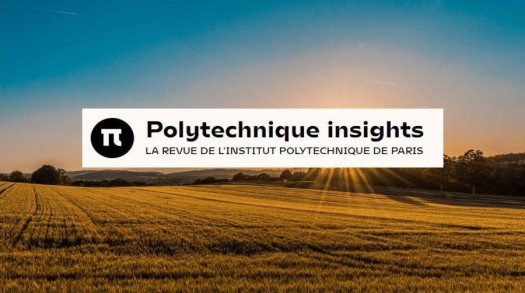Terrestrial Biodiversity
Agriculture, Crops & Soil Health
Ecosystem Services
AXA Chairs
France
2015.03.25
AXA Chair in Ecosystem Engineering and Microbial Ecology
Outcome report summary
Nitrogen-based fertilizers are a necessary evil if we are to feed an ever-growing human population, but the resulting atmospheric and water pollution will only worsen as our reliance on fertilizers increases. How can we produce enough nutritious food without spawning an environmental catastrophe? AXA Chair Prof. Graeme Nicol at The Nicol Lab at Ecole Centrale de Lyon has spent the past 5 years characterizing the contribution of soil microorganisms to nitrogen cycle processes. While it can be difficult to fathom the colossal environmental effects of such tiny organisms, even this very basic understanding of their physiological characteristics could be leveraged to develop fertilizers that produce half as much pollution in the future.
The environmental effects of nitrogen-based fertilizers
Nitrogen, an essential component of all living things, is found in abundance in the atmosphere and can be “fixed” with hydrogen to produce ammonium, which crops use as an essential nitrogen source when added to the soil. Fertilized land produces more food, but these nitrogen-based fertilizers also accelerate natural nitrogen cycle processes, which can lead to the leaching of excess nitrate into waterways and increased conversion of nitrogen into the greenhouse gas nitrous oxide. The key players in these processes are soil microorganisms, which were the subject of Prof. Nicol’s research during his 5-year Chair.
Contributions of soil microorganisms to pollution
Bacteria and archaea are two organisms found in soil that convert ammonia before growing plants have a chance to take it up—including ammonia derived from fertilizers. While these “ammonia-oxidizing” organisms look very similar under a microscope, the Nicol Lab has uncovered their quite distinct characteristics and contributions to nitrogen cycle processes. First, Prof. Nicol found that ammonia-oxidizing bacteria contribute more to atmospheric pollution than ammonia-oxidizing archaea do, producing twice as much of the greenhouse gas nitrous oxide. Second, ammonia-oxidizing bacteria and archaea have different fertilizer preferences: bacteria use typical inorganic “manmade” ammonium fertilizer, whereas archaea sometimes avoid this and prefer using more organic sources of nitrogen. This knowledge can inform the design of “smart,” slow-release fertilizer that pollution-producing bacteria have a harder time accessing.
Different soils
Prof. Nicol’s recognition that different soils contain microorganisms with vastly divergent characteristics has also inspired collaborations to better understand the physiology of ammonia oxidizers from different soils. For example, collaborations with researchers from the Chinese Academy of Sciences have focused on the nitrogen cycle in uniquely Chinese soils, such as tea soil, which is very acidic. Prof. Nicol has also flagged existing methodological flaws that do not consider soil and microorganism differences, such as using one single test to characterize diverse microbial communities.
Industry implications: slow-release fertilizer
Slow-release nitrogen fertilizers are fertilizers bound with compounds that stop the rapid addition of ammonium into the soil. A more gradual nitrogen release increases fertilizer efficiency by enabling plants to take up more nitrogen and reducing the overactive conversion of ammonium into nitrate by soil microorganisms. Indeed, Prof. Nicol’s laboratory systems revealed a 50% reduction in harmful nitrous oxide emissions when using slow-release fertilizers compared to traditional fertilizers. Once validated in the field, this new knowledge could prove pivotal for industrial fertilizer manufacturers.
Future directions
Off the back of the 5-year Chair come three new strands of research. Prof Nicol will work alongside collaborators in Greece and Austria through an EU-funded project called ACTIONr to assess the effect and safety of synthetic “nitrification inhibitors,” which are compounds that reduce nitrification activity. Second, he will probe the exciting potential of biological nitrification inhibitors that are produced by plants—plants produce these compounds to gain a competitive advantage over microbial communities for nitrogen. Using these natural compounds would avoid the drawbacks of artificially synthesized nitrification inhibitors. Finally, Prof. Nicol hopes that uncovering the specific interactions between ammonia oxidizers and ammonia oxidizer viruses will also facilitate the development of methods to control nitrification activity.
November 2022

Graeme
NICOL
Institution
École Centrale de Lyon
Country
France
Nationality
British
Related articles
Climate Change
Terrestrial Biodiversity
Agriculture, Crops & Soil Health
Climate Adaptation & Resilience
Nature-based Solutions
AXA Chair
Argentina
2024.12.06
Harnessing the Potential of RNA: Pioneering a Sustainable Path to Climate-Resilient Crops
Federico Ariel's research project addresses this critical threat to global agricultural productivity and offers a potential solution. His focus on... Read more

Federico
ARIEL
National University of the Litoral (UNL)
Renewable Energy
Terrestrial Biodiversity
Solar Energy
Agriculture, Crops & Soil Health
Post-Doctoral Fellowship
France
2024.03.01
How Agrivoltaics Can Meet the Net-Zero Policy
Dr. Chloé Dindault’s project at the National Polytechnic Institute of Bordeaux (Bordeaux INP) will address the dual challenge of enhancing... Read more

Chloé
DINDAULT





